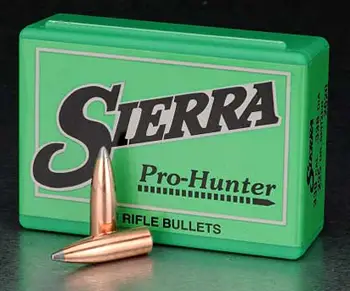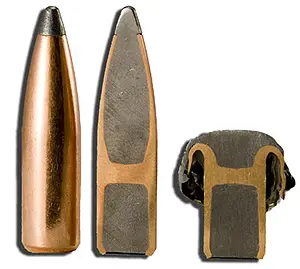|
Premium versus Proper Bullets By Cal Bablitz These days it seems like everyone is promoting premium bullets, certainly including all of the ammunition manufacturers. Regardless of the caliber or the intended game it is repeated in most of today�s shooting literature that we should be using premium bullets. Usually, the term �premium� is never defined and bullets described as such are touted as a remedy that can make your gun shoot better groups, flatten trajectory and produce quicker kills. In reality, a bullet can be labelled as �premium� for a number of reasons. Some premium bullets are designed for more penetration (less expansion) and/or higher weight retention; some are constructed to very high standards of uniformity and can potentially deliver better accuracy; still others offer a higher ballistic coefficient for flatter trajectory. Quite often bullets designed to excel in one of these areas will suffer in others, but not always. Match bullets, for example, typically combine excellent uniformity with a high ballistic coefficient, while terminal performance is typically erratic, since terminal performance is not a factor when shooting paper targets. Achieving quick kills involves many variables that need to be considered when choosing a hunting bullet. Better accuracy is a tough promise to keep, as bullets that perform well in a given gun can often perform poorly in another. It is often true that an individual rifle will shoot a particular brand of standard (less expensive) ammunition better than premium loads. In regards to ammunition, �premium� is a broad term and without further definition all it can really promise is that it will cost more money. It is this writer�s opinion that the factors involved in cleanly killing large animals, such as elk or moose, can be very different than those involved in cleanly killing deer. On deer size game, one generally experiences quicker kills with bullets that mushroom quickly and dump their energy into the animal. Moose and elk, on the other hand, are simply too big and tough for systemic shock to reliably play a major role in lethality. For these types of animals, you are more or less trying to poke a hole in something vital and your major concern is getting enough penetration to ensure this happens, rather than trying to dump enough energy to �shock� a 1000 pound animal to death. I�ve seen many hunters chasing moose with bullets such as Sierra GameKings or Nosler Ballistic Tips, convinced that they will get better terminal performance because of the higher cost. In reality, these bullets were not designed for deep expansion and in my experience offer less satisfactory terminal performance on large animals than many non-premium bullets. Bullets like the Remington Core-Lokt or Federal Fusion in the appropriate weight would work just as well, or better. At the other end of the scale, one of the common complaints one hears about premium ammunition is that kills on deer sized game are less than impressive. I briefly hunted with a partner who did most of his hunting with a .300 Magnum. More than once he commented to me that he would only take head or neck shots, as he had found that �deer that were shot in the lungs would often run 100 yards or more before dying.� This was completely contrary to my own experience. The cause of my friend�s opinion was quite likely the very tough Winchester Failsafe bullets that he liked to use, which would leave a tidy .30 caliber hole in each side of a deer.  Bullet requirements vary from cartridge to cartridge. Quite often, when I tell another hunter that I intend to hunt moose or elk with a rifle chambered for a cartridge they consider marginal, they will make the comment, �You had better use a good bullet!� Tough premium bullets offering less expansion in order to penetrate more deeply only become necessary at high impact velocities. John Nosler developed his famous partition bullet after experiencing bullet failure with conventional bullets while hunting moose. John shot a .300 Weatherby Magnum. I tend to think that if he had been shooting a 30-06 he might have happily used Core-Lokts his whole life.  Most modern hunting bullets will penetrate well, as long as their impact velocity is not faster than the speed at which they are designed to perform. Quite often, one will hear stories of bullets exiting large animals at long ranges used as examples when people are bragging about their favorite cartridge or bullet. From my own observations, longer shots will quite often result in good penetration. What really tests a bullet�s ability to hold together are shots made at short range, when the bullet hits its target while still moving at high velocity. Most standard calibers launch bullets at speeds of less than 3000 fps and in my experience will do better with regular bullets than the faster magnums. Hunting bullet performance is a broad subject with a great many variables that need to be considered. Like most problems of this nature, trying to solve it by simply throwing money at it can achieve mixed results, at best. The shooter must have a clear idea of what he needs his bullet to do and he should do enough research to make a well informed decision. This is necessary regardless of whether it is decided that premium or regular bullets will be used in a particular rifle for a particular purpose. Using appropriate standard bullets in a .270 Winchester, I have several times broken both shoulder blades on moose. Use the wrong bullet in that same situation and the results could be similar to those experienced by Mr. Nosler. |